Case Abstract By August 2007, Deborah Cairns and Fran Reilly had been in business just a year and their alternative, family-directed funeral business had already won a regional...
Case abstract Scojo Foundation uses a market-based approach to sell affordable reading glasses to the poor. While it had been another successful year for Scojo, Jordan Kassalow, Chairman...
Case abstract Over the last 6 years, under the leadership of Dr. Greg Allgood, director of the Children’s Safe Drinking Water Program, P&G has helped to distribute 65...
Case abstract Steve Glenn, a successful internet start-up entrepreneur, returned to his love of architecture and commitment to sustainability by creating a company that would provide signature, green,...
Case Abstract Nearly all environmental organizations have a similar aim; to stop the degradation of the natural environment. However, the strategies which environmental organizations choose to employ are...

